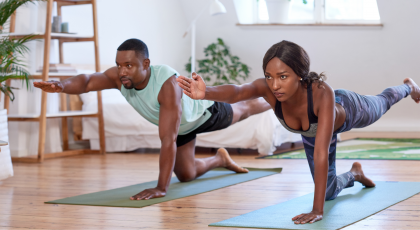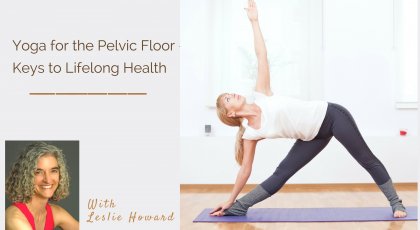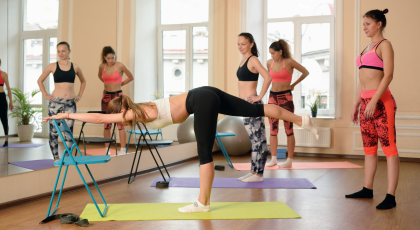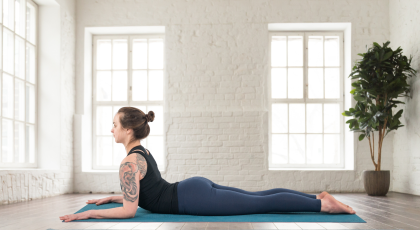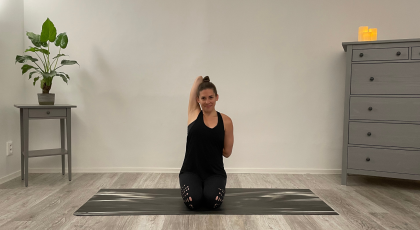View basket (0 items $0.00)
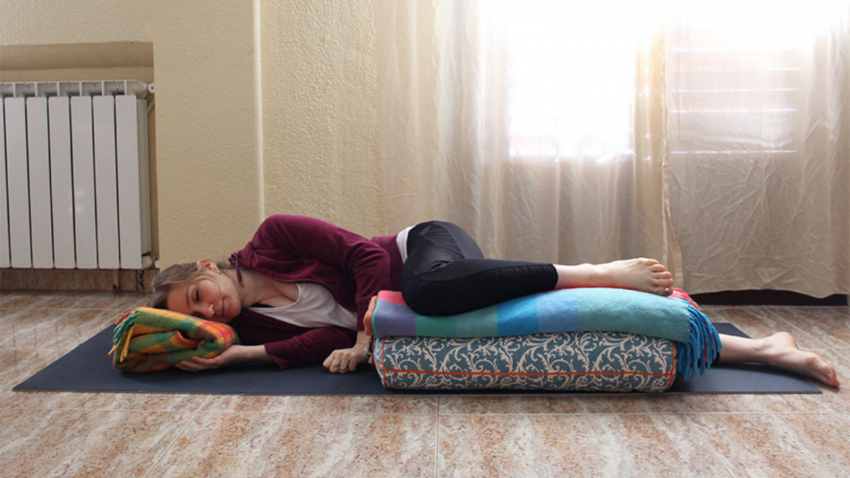
Yoga Pose Variations: 4 Ways to Safely Modify Savasana During Pregnancy
Savasana (Relaxation Pose) is an excellent and beneficial way to end any yoga practice. However, it can be even more beneficial and enjoyable to spend a few minutes in Savasana during pregnancy since you may not be getting as much quality rest as usual.
Nonetheless, as your pregnancy progresses, you’ll have to modify Savasana so that you and your baby are safe and comfortable.
Why and When to Modify Savasana During Pregnancy?
Throughout the first months of pregnancy, your baby, as well as your uterus, are still small. Therefore, during this time, it is okay for you to lie on your back.
However, as you near 16 weeks or four months, your baby will be roughly the size of an avocado. Along with the uterus, placenta, and amniotic fluid, the weight of your belly will increase.
When lying on your back, all this weight will be pressing on your inferior vena cava. It’s a large vein located to the right of your spine, and it carries deoxygenated blood from the bottom part of the body to the heart. From the heart, blood travels into the lungs, where it gets oxygen. Then, this oxygen-rich blood goes back to the heart, and from there, gets distributed throughout the body.
Lying on your back during the later months of pregnancy can cause compression of the inferior vena cava. As a result, your blood pressure can lower. You may feel dizzy, experience pain, muscle twitching, and fluid retention.
To prevent this, do not lie on your back past week 16. Some experts state that up to 20 weeks is also fine. But, if you are in doubt or worried, you can modify Savasana even earlier.
4 Ways to Modify Savasana During Pregnancy
To modify Savasana during pregnancy, lie on your side or at a gentle incline, propping your body at an angle with yoga props or anything that can serve the purpose.
Below, there are four different ways in which you can safely rest in Savasana during pregnancy.
1. Inclined Savasana with Straight Legs
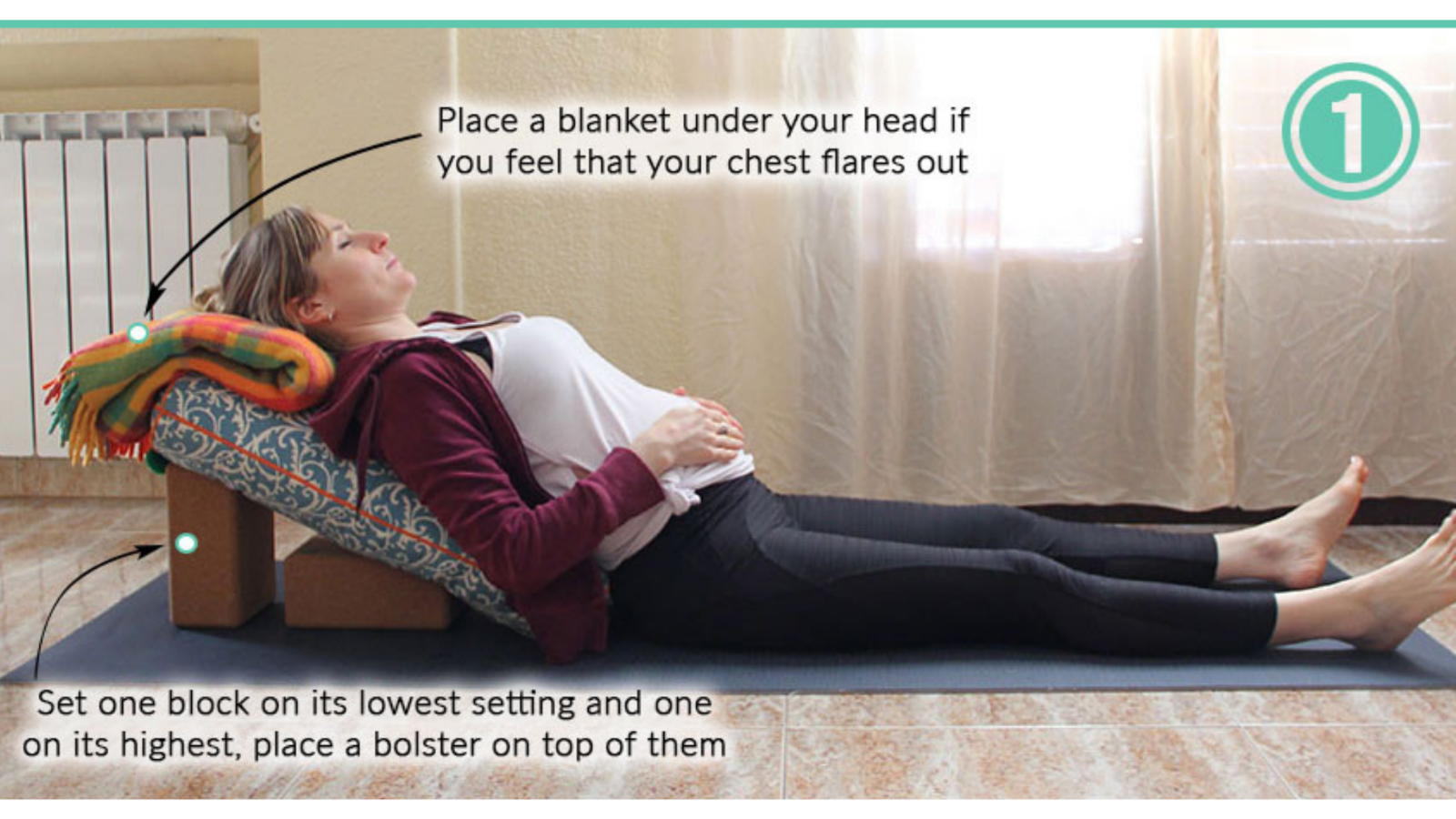
You’ll need two blocks and a bolster. A blanket or a few can be used to, though a bolster will offer more stability and support.
-
Place your blocks at the back of your mat. Putting them on the mat instead of the floor will prevent slipping.
-
Position the first block on its lowest setting in the center of your mat. This block will be by your butt.
-
Next, place the second block behind it at its highest setting. This block will be under your head. Depending on your height, adjust the gap between the blocks to find the most comfortable incline.
-
Then place your bolster or a stack of bolsters over both blocks. Firm rectangular bolsters are best for this. The lower end of your bolster should rest on the mat while the upper end should align with the back edge of the block on its tallest setting.
-
If that doesn’t feel comfortable or if your ribs are flaring out, use a blanket to support your head. Adjust as much as needed to feel comfortable.
-
Sit on your mat with your lower back touching the bolster.
-
Slowly walk your hands back and lean back as you prop against the bolster. Avoid using your abs as you lean back. Incorrect engagement of your abs can result in unnecessary strain on your connective tissues and aggravate the development of diastasis recti.
-
Straighten your legs and separate the feet.
-
Cover up with a blanket if you feel chilly.
-
Close your eyes and relax.
-
To exit this modified Savasana, roll onto your right side and prop yourself up into a seated position using your hands. Avoid engaging your abs as you return to sitting.
2. Inclined Savasana with Butterfly Legs
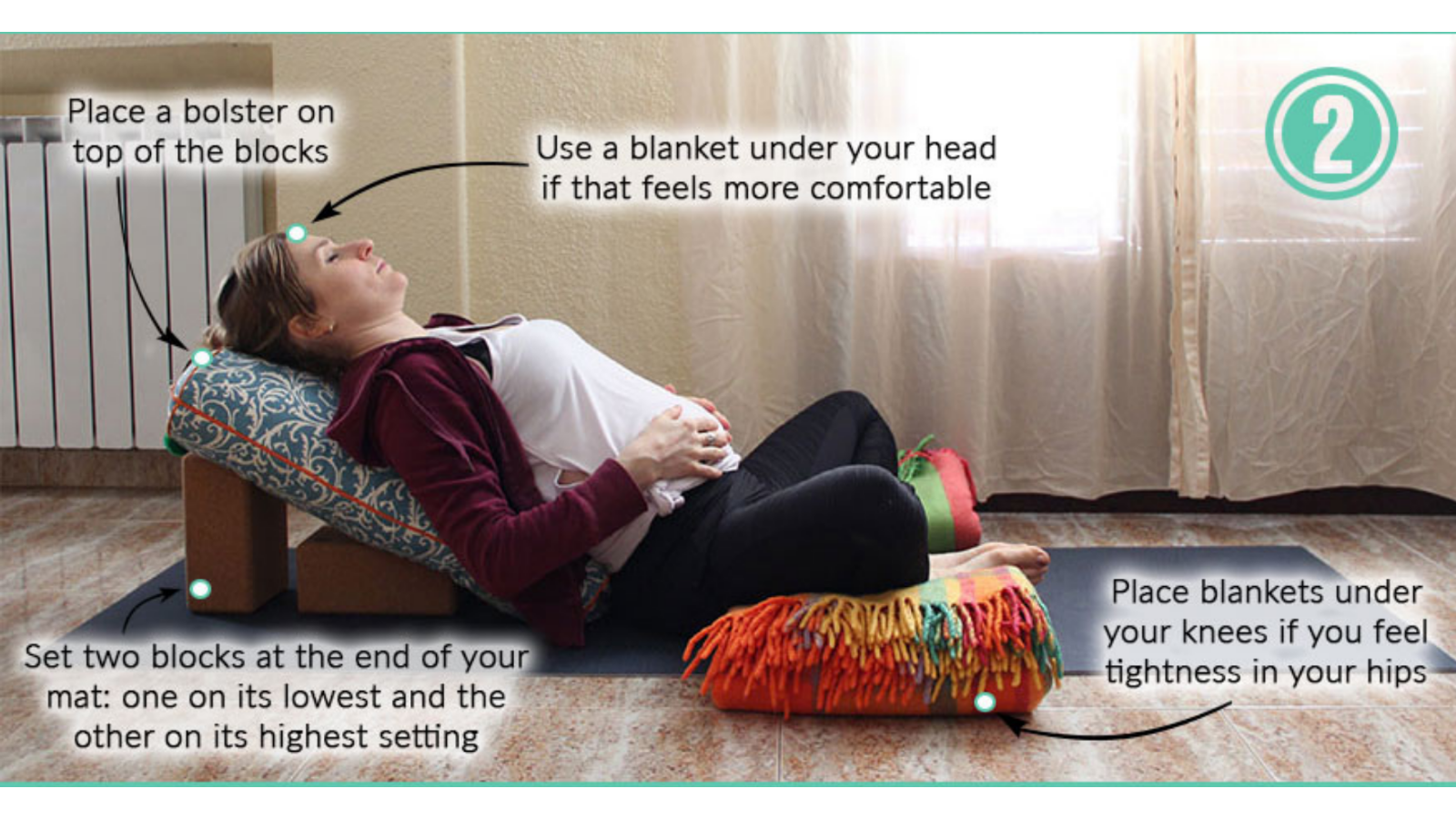
This variation is almost identical to the one above. But, instead of straightening your legs, position them in Baddha Konasana (Bound Angle Pose or Butterfly Pose).
To modify Savasana in this way, follow all the steps above except for 8. Instead, bend your knees, open your knees to the sides, and press the feet together.
If your hips or knees don’t feel comfortable, place folded blankets or yoga blocks underneath your knees.
3. Side-Lying Savasana with Bent Knees
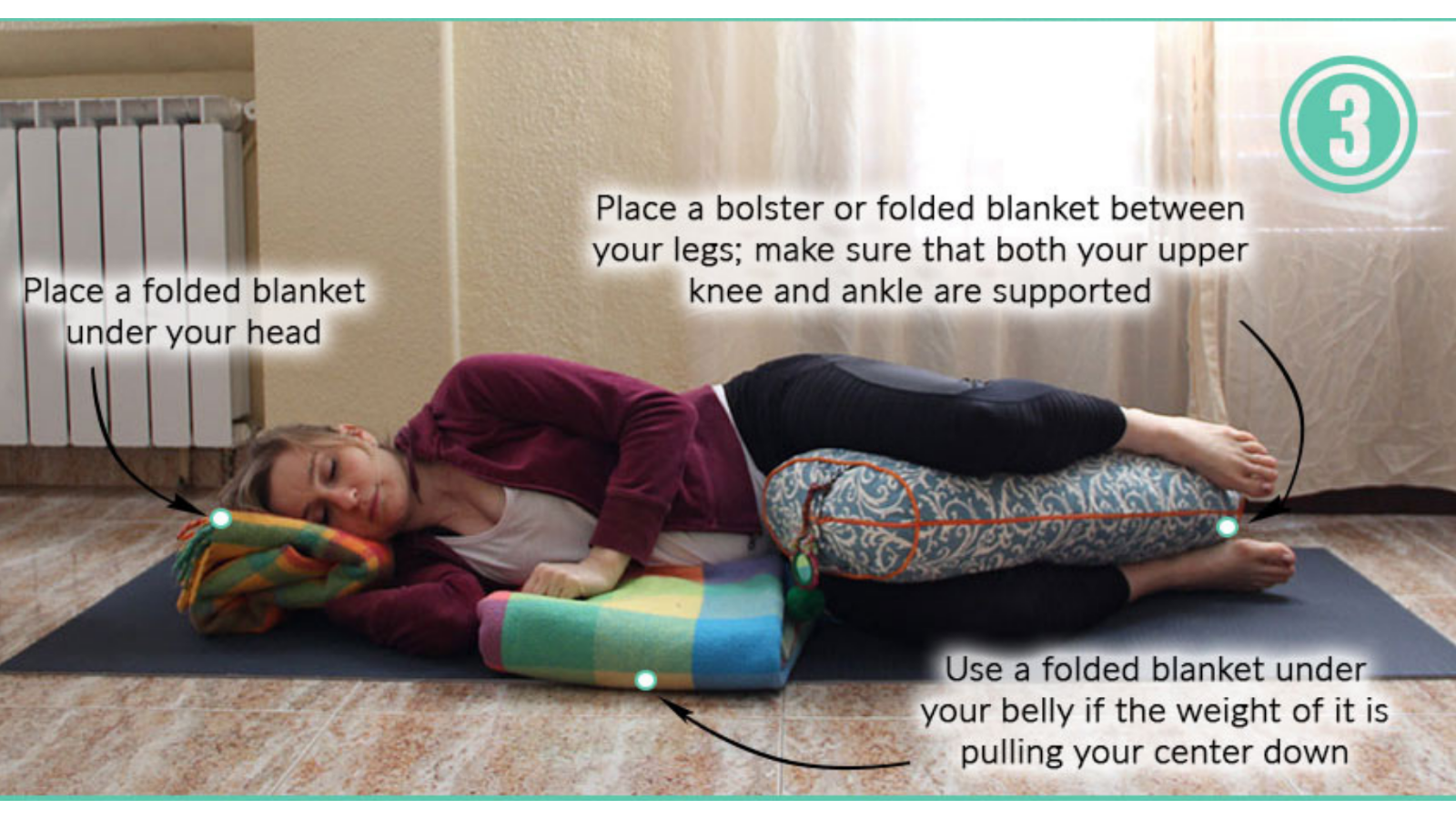
Another way to modify Savasana during pregnancy is to lie on your side. Due to the increased flexibility of your joints and belly, this may not feel very comfortable. Use props to increase comfort.
You’ll need a yoga bolster, pillow, and some blankets. A smaller bolster may feel more comfortable than a standard one. Or, you can also use several blankets.
-
Fold a blanket so that it is quite thick. You’ll use this blanket under your head so that it stays in line with your spine. You’ll prevent potential pulling or overstretching of muscles in your neck and shoulders.
-
Lie down on your side. Which one? Technically both can work. Traditionally, the right side represents active, solar energy. So, lying on the right side is considered invigorating. Moreover, your heart is above other organs, and there is less pressure on it. The left side traditionally represents slow, lunar energy, and lying on it is thought to be relaxing. Medics also recommend lying on the left side. This will result in better blood circulation and reduced pressure on your liver. If you lie on your right side, the uterus presses on your liver. Since both have their benefits and drawbacks, listen to your body, and do what you feel is best.
-
Bend your knees and position a bolster, pillow, or folded blankets between your legs. Ensure you place it between your knees as well as ankles. You shouldn’t feel pressure or pull in your lower back, and your hips should feel more comfortable.
-
If the weight of your belly is pulling down your center, place a folded blanket under your belly.
-
If you feel chilly, cover up with a blanket.
-
Close your eyes and relax.
-
To exit this modification, push yourself up using the opposite hand of the side that you are on.
4. Side-Lying Savasana with Bent Upper Knee

For this variation of modified Savasana, you’ll need some blankets and a bolster. A rectangular bolster is best. You can use several folded blankets instead of the bolster, as well.
-
Put a folded blanket at the top of your mat to prop your head.
-
Lie on either one of your sides.
-
Straighten your bottom leg.
-
Put a bolster or blankets in front of the straight leg. Then, prop your upper knee on them. If the bolster feels too low, lay another blanket over it. Make sure your top knee, as well as your top ankle, are on the bolster or blankets.
-
Next, place a folded blanket under your belly if you feel that it’s pulling your center down.
-
Cover up with another blanket if you feel cold.
-
Close your eyes and rest.
-
To get out of this variation, press yourself up into seated with the opposite hand.
No Yoga Props, No Worries!
If you have no props at home, that’s not a problem. Get creative and use anything around the house—thick sweaters, cushions, pillows, and similar.
 Karina Norton is a certified yoga instructor currently living and teaching in the south of Spain. She is passionate about anatomy and uses her background in weightlifting and dance to teach creative and safe classes. Karina primarily teaches a variety of mixed-level Vinyasa, Ashtanga, and Yin yoga classes and workshops, and particularly enjoys working with women during their prenatal and postnatal journey. She continuously learns about different aspects of yoga and blogs on her website yogabykarina.com.
Karina Norton is a certified yoga instructor currently living and teaching in the south of Spain. She is passionate about anatomy and uses her background in weightlifting and dance to teach creative and safe classes. Karina primarily teaches a variety of mixed-level Vinyasa, Ashtanga, and Yin yoga classes and workshops, and particularly enjoys working with women during their prenatal and postnatal journey. She continuously learns about different aspects of yoga and blogs on her website yogabykarina.com.
Featured Courses
